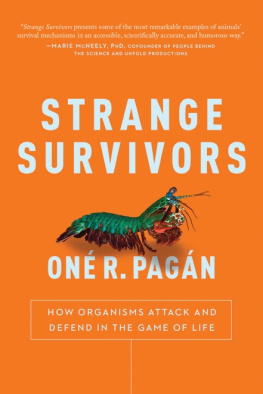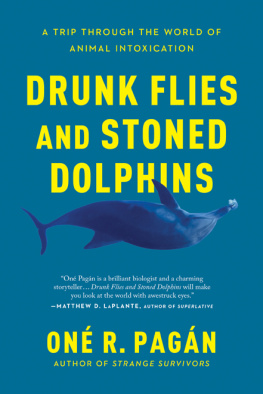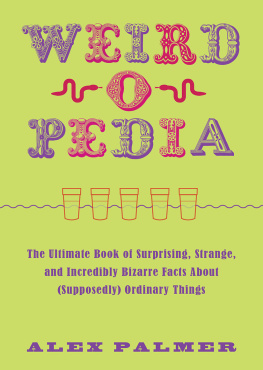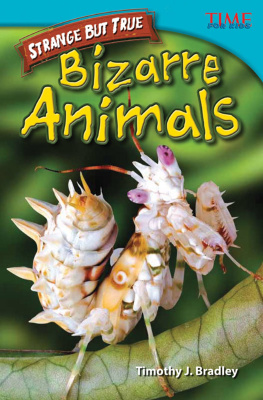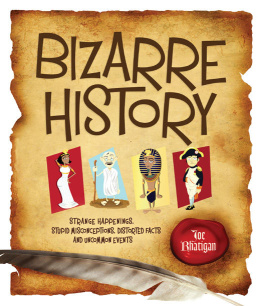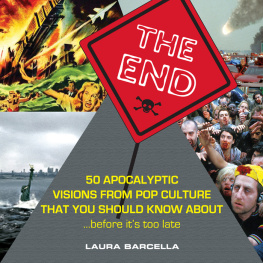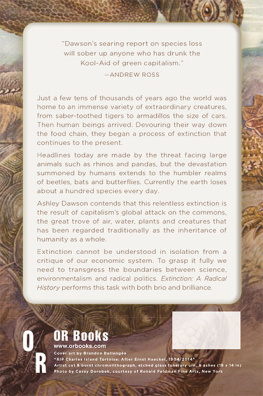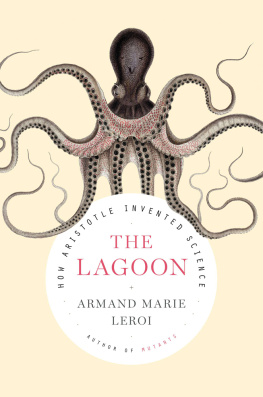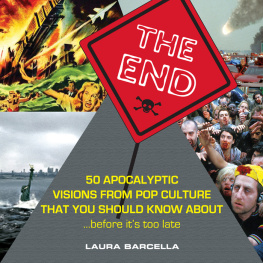Praise for Strange Survivors
Strange Survivors presents some of the most remarkable examples of animals survival mechanisms in an accessible, scientifically accurate, and humorous way. Reading this book was like sitting down to enjoy a chat on the wonders of the natural world with a close friend.
MARIE McNEELY, PHD, cofounder of People Behind the Science and Unfold Productions
Strange Survivors is technically accurate and isnt shy with scientific terms, but never in a manner thats intimidating or overbearing. This isnt fictionyou have to think as you read, but the reward is an increased understanding of the astonishing variety of life on Earth and the strategies species use to survive.
PETER CAWDRON, author of Anomaly
STRANGE SURVIVORS

Copyright 2018 by On R. Pagn
All rights reserved. No part of this book may be used or reproduced in any manner whatsoever without written permission except in the case of brief quotations embodied in critical articles or reviews.
About the cover image: Mantis shrimp use natural ballistics to capture their prey with ultrafast spiny appendagesthey also have unique visual systems that allow them to see as many as 100 million colors (humans can see between 1 and 10 million). Image courtesy of worldartsme.com.

BenBella Books, Inc.
10440 N. Central Expressway, Suite 800
Dallas, TX 75231
www.benbellabooks.com
Send feedback to feedback@benbellabooks.com
First E-Book Edition: February 2018
Library of Congress Cataloging-in-Publication Data:
Names: Pagn, On R., author.
Title: Strange survivors : how organisms attack and defend in the game of life / One R. Pagan.
Description: Dallas, TX : BenBella Books, Inc., [2018] | Includes bibliographical references and index.
Identifiers: LCCN 2017052642 (print) | LCCN 2017058961 (ebook) | ISBN 9781944648596 (electronic) | ISBN 9781944648589 (trade paper : alk. paper)
Subjects: LCSH: Drug resistance in microorganisms. | Antibiotics--Development.
Classification: LCC QR177 (ebook) | LCC QR177 .P34 2018 (print) | DDC 616.9/041--dc23
LC record available at https://lccn.loc.gov/2017052642
Editing by Laurel Leight and Alexa Stevenson
Copyediting by Scott Calamar
Proofreading by Sarah Vostok and Amy Zarkos
Indexing by Jigsaw Information
Text design and composition by Silver Feather Design
Front cover design by Faceout Studio
Jacket design by Sarah Avinger
Printed by Lake Book Manufacturing
Distributed to the trade by Two Rivers Distribution, an Ingram brand
www.tworiversdistribution.com
Special discounts for bulk sales (minimum of 25 copies) are available.
Please contact Aida Herrera at aida@benbellabooks.com.
To Liza.
Twenty-five years and counting!
CONTENTS
I want the very first words you read from me to be an expression of how grateful I am that you chose this book. This is a wonderful time to be a science enthusiast; there are a plethora of popular science books for you to choose fromand yet, here you are, reading mine! I hope you will enjoy it, and I thank you from the bottom of my heart.
Why should you read this book? In a nutshell, because the living world is majestic and awe inspiring, and because by learning about it we may also come to understand ourselves a bit better. It is as simple as that. Life on Earth isstill, despite the breakneck pace of extinctionsmajestically diverse, and displays, in Charles Darwins most famous words, endless forms, most beautiful and most wonderful. Biological life fills us with wonder with its unending mysteries, puzzling behaviors, breathtaking beauty, raw violence, and unexpected liaisons. However, beauty, majesty, and wonder are only part of the proverbial picture. Virtually every peculiar trait, every behavior, every colorful characteristic that makes the biological world so interesting to look at and entertaining to explore evolved to confer practical benefits to the organisms displaying it, and many of those traits also offer us tools to improve our own chances of survivalwhether directly, as with substances that prove useful in curing disease or otherwise improving human life, or indirectly, as knowledge that informs technological, engineering, or medical research. You see, we do not have to choose between wonder and practicality; with nature, we can certainly have both.
We humans are counted among those endless, beautiful forms Darwin spoke of. Moreover, whether we realize it or not, whether we like it or not, we are intimately connected to all the other life forms with which we share this planet. There is one characteristic in particular that we share with all life, a drive so fundamental that it is at the root of much of what we do and are. This drive has had many names over time, such as the will to live or preservation instinctpersonally, I prefer to call it the survival instinct. This instinct is an undeniable biological imperative, and because of it, life has evolved a mind-boggling variety of strategies to stay, well, aliveto survive long enough to transmit its genetic information to the next generation.
I will say this in various ways throughout the book, but the main point is that all organisms have a primary mission, which can be divided into three parts: (1) to get energy from the environment, (2) to avoid becoming food for other organisms, and (3) to pass on their genetic information. From the perspective of the biological world, these are the mostnay, the onlythings that matter.
Before we get started, a few details
A note about or to allude to curious connections, they are otherwise quite independent from each other, and you need not necessarily read them in the order they appear. This is, after all, your book. Read it any way you like. You do not even have to read the rest of this introduction, if you dont want to!
But, just in case you do want to, I will go ahead and finish it up.
I wrote this book with the semi-mythical interested layperson in mind. This means that I will not be excessively technical, but neither will I be patronizing. This book is for you, my fellow science enthusiast. I was a bookworm long before I became a science professional, and regardless of our respective walks of life, we belong to the same club. Ive tried to write as if we were having a conversation over coffee (assuming your coffee conversation focuses on things like venoms and killer snails). Ideally, this conversation will be interesting, thought-provoking, andwhy not?amusing as well. The natural world is certainly awe-inspiring, but it is also deeply weird and often frankly hilarious: this is part of its considerable charm.
I would be remiss if I did not acknowledge the influence that blogging has had on my writing in general and this book in particular. Blogging is how I tasted for the first time the elation of presenting my informal musings to an audience. My blog, Baldscientist, was the initial repository of a few of the stories that youll see in Strange Survivors, though of course these have been further developed and significantly expanded for this book.
Finally, virtually every popular science writer aspires, whether consciously or not, to reflect the style of an admired writer or scholar, and I am no exception. I admire a great many science writers and their books, but I wish to acknowledge two books in particular that inspired the writing of my own:
Next page
